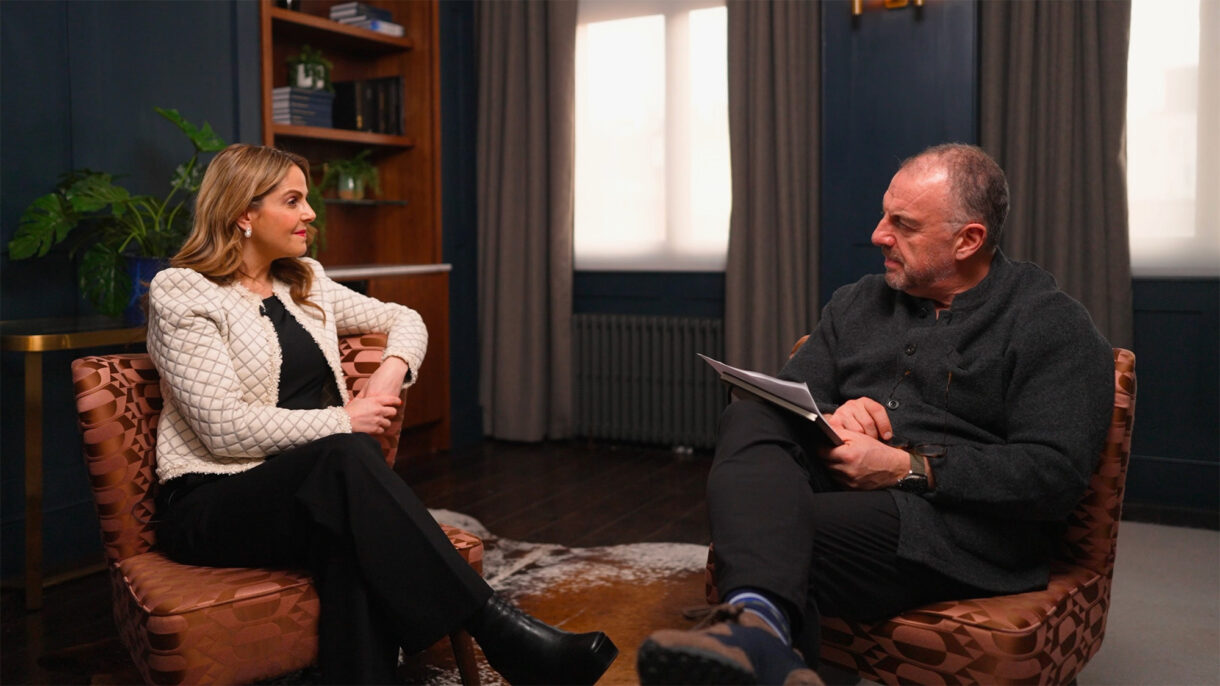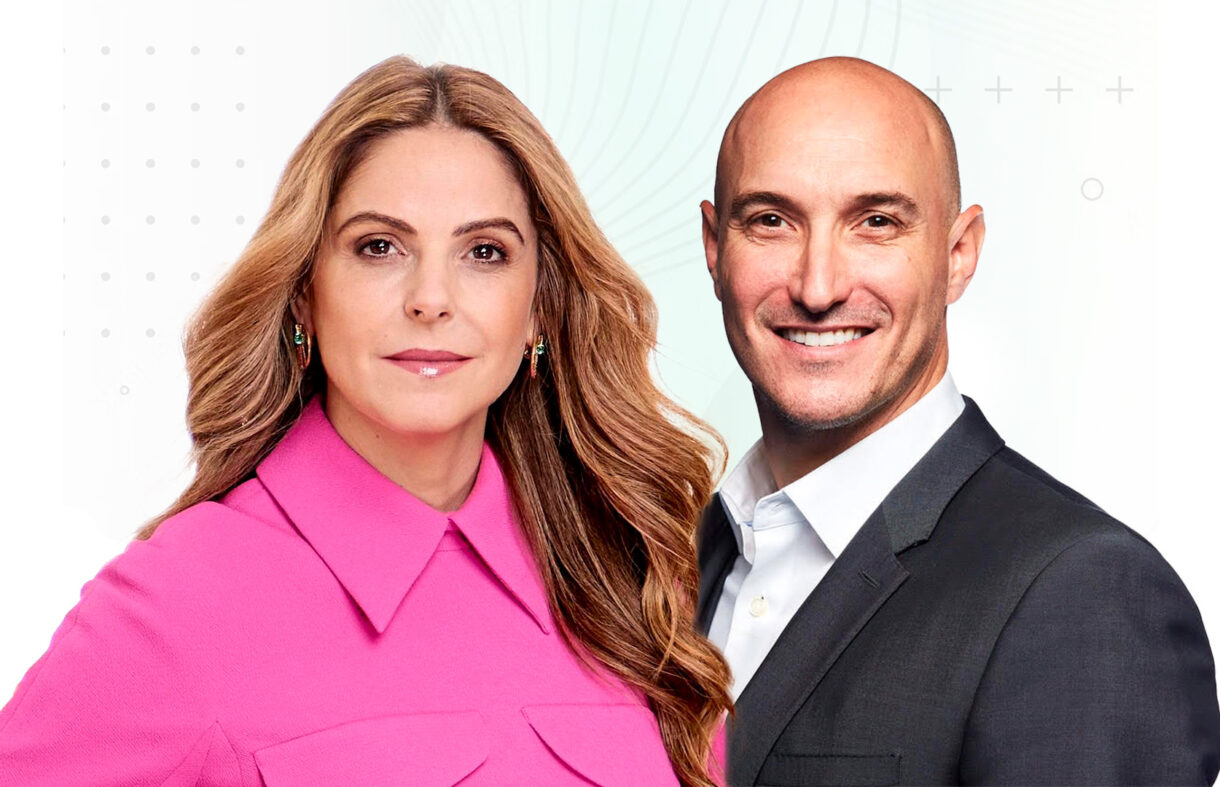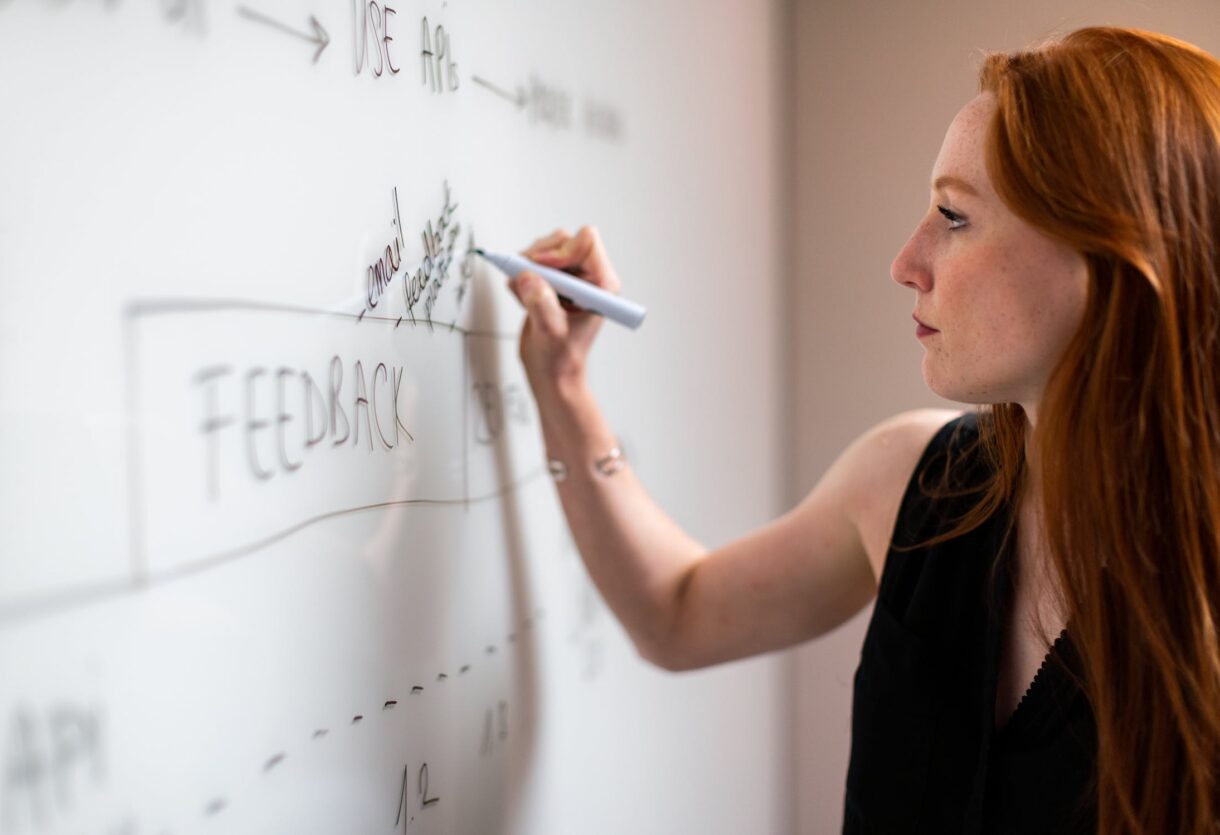WHITE PAPER
The success of a team is evidenced by how efficiently it manages meetings: in essence, a team’s performance is determined by how well it prepares, conducts and follows through after its meetings.
Other contributory factors to team performance include: how a team deals with critical issues; how it comes to conclusions and makes decisions; how work is assigned; how conflict is resolved and how members are held accountable. All of this is determined by how interaction occurs, i.e. how people communicate before, during and after meetings.
How a team talks together will determine how well it works. Trust, respect and communication are essential foundation stones of a high-performing team. A high-performing team is all about relationships that consistently produce breakthrough results. While it’s nice if team members actually like each other, ‘liking’ is an option in a high-performing team; trusting, respecting and communicating well is not an option; it’s a must. Sometimes team members WON’T like each other, but they can still work together.Having studied the interaction and behaviours of some of the world’s best leadership teams over 20 years, Oxford Leadership has identified the defining norms of high-performing top management team meetings.
“If you had to identify in one word the reason why the human race has not achieved, and never will achieve its full potential, that word would be ‘meetings’.”
Dave Barry
American author and columnist
Herein lays the challenge. If a team has been assembled correctly, it will have a high degree of diversity; not only gender and geographic diversity, but diversity of perspective. A high level of diversity is essential if a team is to tackle highly complex and nuanced challenges under pressure of time. The problem with a high level of diversity is the inevitable conflict that accompanies it. In a high-performing team, conflict is inevitable. So long as it isn’t toxic, conflict can be beneficial in a team. Diverse perspectives produce friction that stimulates ideas and drives a team towards a more refined and rigorous result.
Before the Meeting:
Decide what kind of meeting you are going to have. Define the intention of the meeting, as well as the various topics on the agenda, for instance:
- Information sharing (What information and why?)
- Solution finding (What is the issue or problem that needs to be tackled?)
- Decision making (What is to be decided? Who is to decide? The leader? The team? What criteria will be used for making a decision?)
- Providing motivation – teambuilding (Why is this necessary now?)
Discover the question the team needs to answer. Albert Einstein once said, ”If I had to solve a problem in one hour and my life depended on the solution, I would spend 55 minutes figuring out the right question. Once I’ve discovered the right question, I’ll solve it in 5 minutes”. Make sure you are asking the right question that can only be answered by the people you have invited to the meeting. Crafting the right question is the key to an effective meeting.
Invite the right people. Not everyone should be invited to every meeting. Ensuring relevance of each person to the topic is key to optimising the energy of the team. It’s all about having the right people, properly prepared to answer the right question. Reduce the size of the meeting to include only those who absolutely need to be there.
Prepare the critical facts, essential evidence and vital data points. Be sure to prepare the meeting with all the relevant facts assembled in order to understand the context as fully and comprehensively as possible.
- Avoid context setting by anecdote and assumption.
- Provide a clear agenda and pre-reads in plenty of time.
- Make sure people know what to expect and are able to prepare themselves for full engagement, right from the start.
Determine the required roles and ask team members to accept them. The roles are usually:
- Leader (accountable for the preparation, outcome and follow-through)
- Facilitator (responsible for the dynamics and time-keeping of the process)
- Recorder (responsible for accurate capture and report out)
- Participant (responsible for content creation and contribution)
During the Meeting
Trust and respect is either demonstrated or diminished by how team members communicate with each other throughout the meeting. High-performing teams are characterised by the following norms of communications conduct:
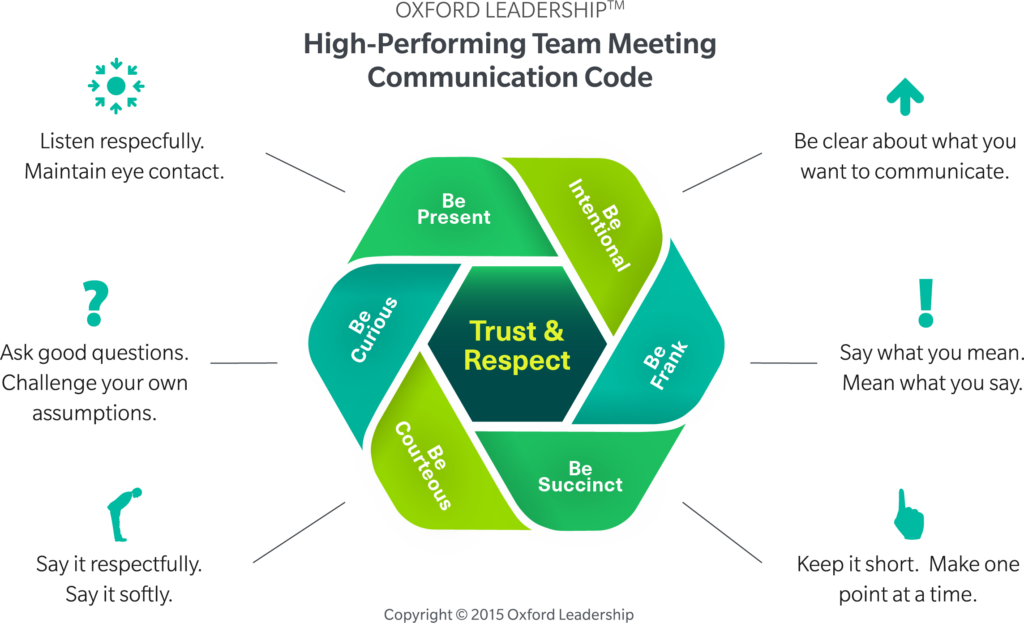
After the Meeting
A team meeting is only a means to an end; it is never an end in itself. The success and effectiveness of any meeting is evident only in what happens as a result. How decisions are executed and followed up, and the results they yield, is the only relevant evidence of a successful meeting. Evaluations which show how much people liked the meeting are meaningless. What happened as result is the only measure of importance to a high-performing team…
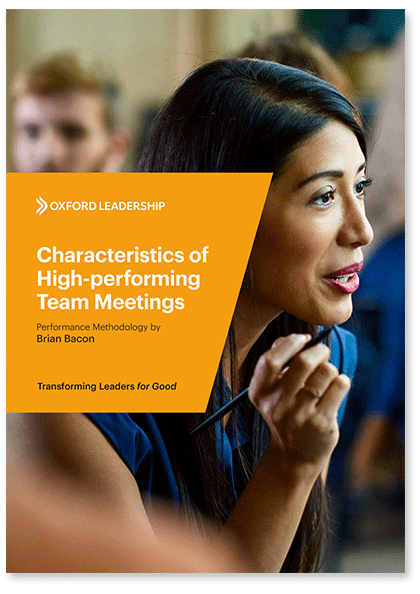
Stay up-to-date with our latest news:
Subscribe


